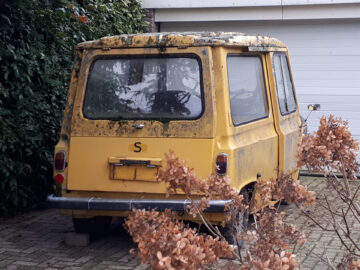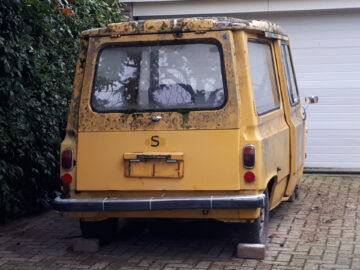Spotted: a very special van
Let’s start at the beginning, in Sweden. In 1963, Postverket (now PostNord Sverige), the postal company of the Swedish state, wanted to purchase new commercial vehicles for mail delivery. For that, it knocked on the door of Kalmar Verkstad, a company that made locomotives and commercial vehicles.
Kalmar KVD440/441
After several years of development, the result was ready in 1969: the Kalmar KVD440/441. It was a compact van built on the technical basis of the then-current DAF 44. With that, the powertrain consisted of an air-cooled 844 cc twin-cylinder boxer engine and the familiar Variomatic transmission. Although the boxer engine could provide enough heat on its own, because of the cold Swedish winters, the Kalmar was optionally available with an additional heating system, with its own fuel engine under the driver’s seat. Outside, the optional heater is identified by an additional exhaust pipe.
The body of the mail truck consisted of a tubular steel frame with fiberglass “sheet metal”. Originally, people in Sweden drove on the left, as in England. In 1967, like the rest of Europe, the country decided to drive on the right. Quite an operation, but that’s a story in itself. This was already taken into account during the development of the Kalmar, precisely by placing the steering wheel to the right. Along with the large sliding door, this allowed the mailman quick access to the roadside mailboxes.
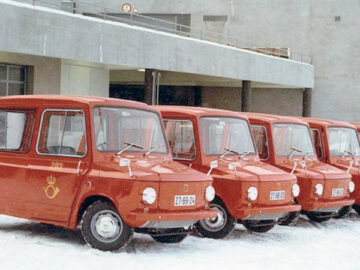
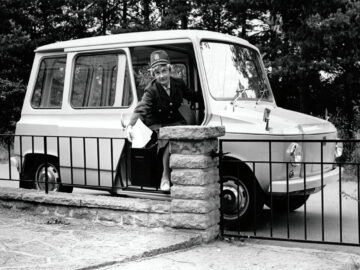
Other names for the Kalmar
Because of this technical basis, the van is also known as the DAF Kalmar, but that is not actually the official type name. The van was also delivered outside Sweden, simply as the Kalmar. So without further type name. In Sweden, the little cart was soon nicknamed Tjorven. That’s the main character from a TV series at the time. Apparently, the Swedes saw the necessary similarities between the van and the character.
Production of the Kalmar ran until 1972 and a total of just over 2,000 were built during those years. Nearly 1,200 of them ended up at Postverket or other postal companies. The Swedish Air Force also had 12 in service, for support duties at airfields. Only 368 were for export, of which 50 would still have been delivered to the Netherlands.
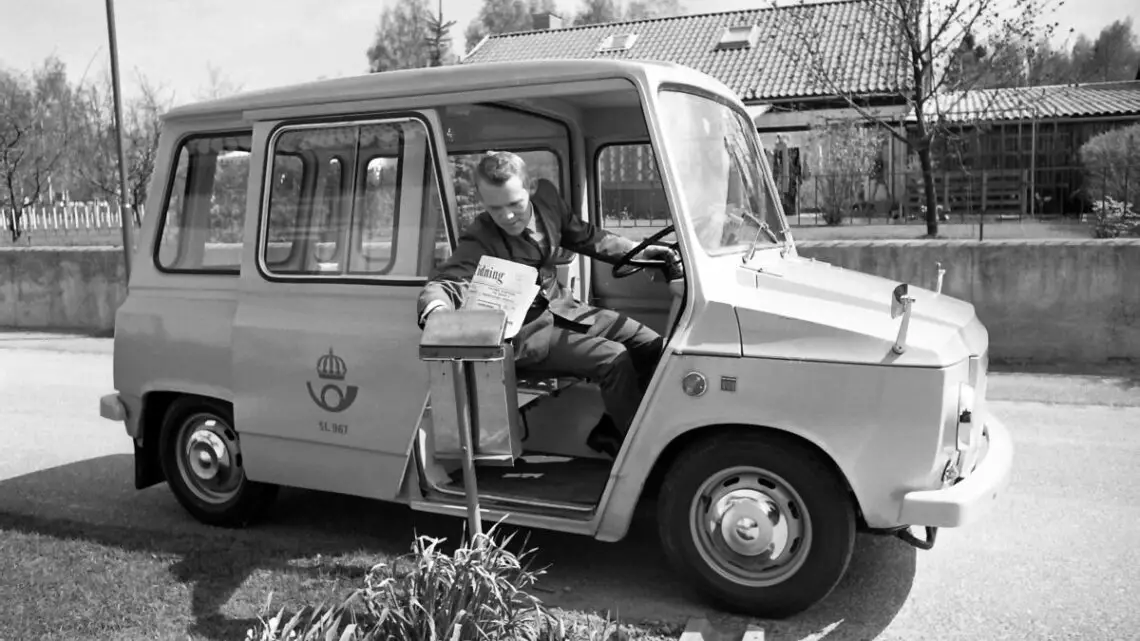
The spotted specimen
Given the low production numbers and limited exports outside Sweden, the Kalmar has always been a rare model in our part of Europe. So the surprise was great when we came across one just like that in a Dutch residential area. The Kalmar no longer has license plates, but the S sticker on the back makes it clear that this is a Swedish origin. Moreover, the yellow color strongly suggests that this is a former Postverket car. The sliding door also appears to have a remnant of the Postverket logo sticker.
Better pictures than this were unfortunately not possible without walking into the garden. That went a bit far for us. Since the car is on private property, we also do not mention the spot location this time. Still, we are curious about the story behind this spot. How did this Kalmar find its way to the Netherlands?
